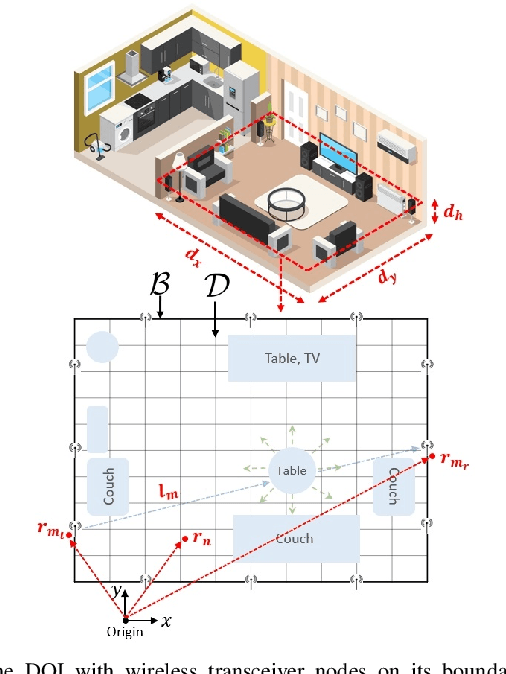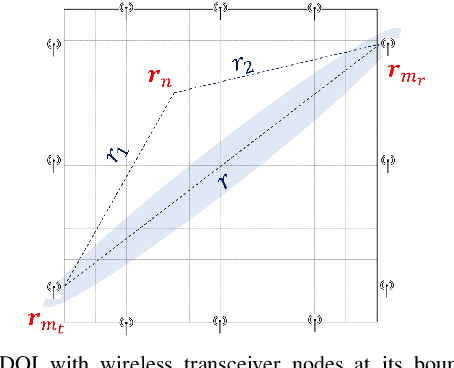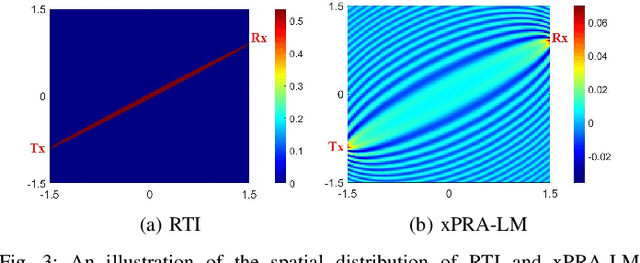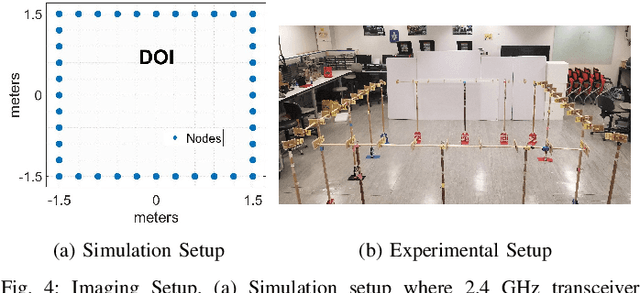Reconciling Radio Tomographic Imaging with Phaseless Inverse Scattering
Paper and Code
Nov 16, 2023



Radio Tomographic Imaging (RTI) is a phaseless imaging approach that can provide shape reconstruction and localization of objects using received signal strength (RSS) measurements. RSS measurements can be straightforwardly obtained from wireless networks such as Wi-Fi and therefore RTI has been extensively researched and accepted as a good indoor RF imaging technique. However, RTI is formulated on empirical models using an assumption of light-of-sight (LOS) propagation that does not account for intricate scattering effects. There are two main objectives of this work. The first objective is to reconcile and compare the empirical RTI model with formal inverse scattering approaches to better understand why RTI is an effective RF imaging technique. The second objective is to obtain straightforward enhancements to RTI, based on inverse scattering, to enhance its performance. The resulting enhancements can provide reconstructions of the shape and also material properties of the objects that can aid image classification. We also provide numerical and experimental results to compare RTI with the enhanced RTI for indoor imaging applications using low-cost 2.4 GHz Wi-Fi transceivers. These results show that the enhanced RTI can outperform RTI while having similar computational complexity to RTI.
 Add to Chrome
Add to Chrome Add to Firefox
Add to Firefox Add to Edge
Add to Edge